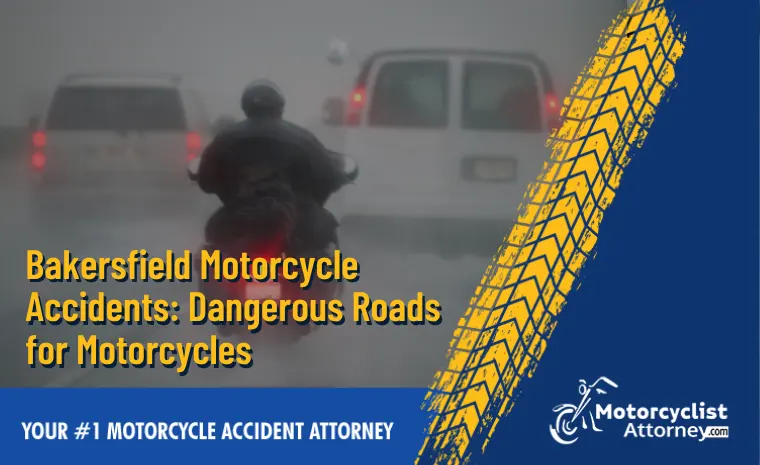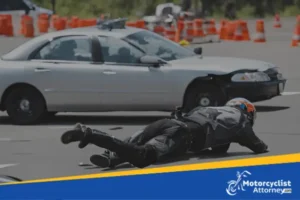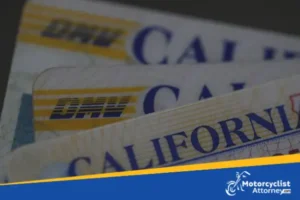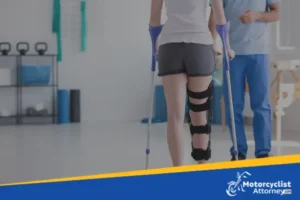In the vibrant city of Bakersfield in Kern County, the allure of the open road attracts motorcyclists to explore its amazing landscapes. While motorcycles offer an exhilarating and liberating experience, the reality is that these two-wheeled vehicles face unique challenges on the roads of Bakersfield. Motorcycle accidents have become an unfortunate and prevalent concern, casting a shadow over the joy that riders seek.
Navigating Bakersfield’s roads demands heightened awareness and caution. Even with the efforts of the California Highway Patrol, Bakersfield has witnessed a concerning rise in motorcycle accidents over the past few years, which emphasizes the critical need to understand the specific challenges faced by motorcycle riders in Bakersfield, and work collectively to enhance road safety.
In today’s blog, we explore the factors contributing to Bakersfield motorcycle accidents and discuss the measures that can be taken to mitigate these risks, ensuring a safer journey for all riders. In particular, we will discuss:
- The state of motorcycle safety in Bakersfield
- Factors that can cause motorcycle accidents
- The most dangerous roads for motorcyclists in Bakersfield
- Legal considerations for victims of a motorcycle accident
The State of Motorcycle Safety in Bakersfield
According to reports from the California Transportation Injury Mapping System, there has been a noticeable increase in motorcycle accidents in Bakersfield in recent years. The figures from the last three years indicate a concerning trend, with an average of 85 reported severe motorcycle accidents a year. Among these incidents, around 10% tragically led to fatalities, highlighting the urgency of addressing the specific challenges faced by motorcyclists navigating the roadways of Bakersfield.
Factors such as distracted driving, failure to yield, and speeding consistently emerge as primary contributors to a motorcycle crash, and the vulnerability of motorcyclists in collisions with larger vehicles is also a significant concern, emphasizing the need for heightened awareness among all road users.
Road infrastructure also plays a role in the heightened risks faced by motorcyclists. Poorly maintained roads, inadequate signage, and limited safety measures can exacerbate the potential for accidents. Understanding these factors is essential in formulating effective strategies to address and mitigate the risks associated with motorcycle travel in Kern County.
However, in light of the current state of deadly motorcycle accidents in Bakersfield, it is imperative for riders to remain vigilant and proactive in promoting a culture of safety on the roads. Through ongoing education, responsible driving practices, and collaborative efforts, Bakersfield can ensure a safer environment for all.

Factors that Cause Bakersfield Motorcycle Accidents
Bakersfield motorcycle accidents are influenced by several factors, ranging from the inherent vulnerabilities of motorcyclists to the condition and design of the roads they navigate. Understanding these contributing elements is crucial for implementing effective strategies to reduce the incidence of accidents:
- Busy Highways and Congested Traffic: High-traffic areas, particularly busy highways and congested urban streets, increase the likelihood of motorcycle accidents. The close proximity of vehicles, frequent lane changes, and sudden stops can create challenging conditions for motorcyclists, who may find it harder to maneuver through traffic.
- Poorly Maintained Roads: Roads in disrepair, marked by potholes, uneven surfaces, or debris, significantly contribute to motorcycle accidents. Uneven road conditions can lead to loss of control, particularly for riders at higher speeds. Addressing road maintenance issues is critical in creating a safer environment for motorcyclists.
- Intersection Hotspots: Intersections are common locations for motorcycle accidents, often due to factors like red-light running, left-turn collisions, or drivers failing to yield the right of way. Motorcyclists may be less visible to other drivers, increasing the risk of intersection-related accidents.
- Lack of Protective Barriers: The absence of protective barriers, such as guardrails or crash barriers, can amplify the consequences of accidents. Motorcyclists are more exposed to the surrounding environment, and the lack of barriers increases the risk of serious injury or fatality, especially in collisions involving larger vehicles.
- Distracted Driving: Distracted driving, including activities like texting or adjusting in-vehicle technology, poses a significant threat to motorcyclists. Inattentive drivers may fail to notice motorcycles in their vicinity, leading to potentially devastating collisions.
- Weather Conditions: Adverse weather conditions, such as rain, snow, or fog, create additional challenges for motorcyclists. Slippery roads and reduced visibility can contribute to accidents. Motorcyclists need to adapt their riding techniques to accommodate changing weather conditions.
- Inexperienced Riding: Inexperienced riders or those engaging in reckless behavior, such as excessive speeding or aggressive maneuvers, contribute to motorcycle accidents. Education and enforcement efforts are crucial in promoting responsible riding habits.
The Most Dangerous Roads for Motorcyclists in Bakersfield
Highway 99
As a major north-south route through Bakersfield, Highway 99 is a bustling highway with high traffic volume. Its straight stretches can tempt motorcyclists to increase speed, while the mix of commuter and commercial traffic poses challenges.
Highway 99 has recorded a significant number of motorcycle accidents, with statistics indicating a higher incidence of collisions, particularly during peak traffic hours. Accidents on Highway 99 often involve rear-end collisions, lane-change mishaps, and high-speed incidents, highlighting the need for heightened rider awareness.
California Avenue
Serving as a primary east-west corridor, California Avenue presents a mix of urban and suburban settings. The road has multiple intersections and commercial establishments, increasing the potential for accidents.
California Avenue has been a hotspot for motorcycle accidents, particularly at intersections, with a notable prevalence of left-turn collisions. Rider inattention and drivers failing to yield the right of way contribute to accidents on California Avenue. Increased pedestrian activity adds to the complexity of navigating this thoroughfare.
Panama Lane
Known for its varying terrain, including curvy stretches and intersections, Panama Lane offers scenic views but demands careful navigation. The road can become particularly challenging during adverse weather conditions.
Motorcycle accidents on Panama Lane often involve single-vehicle incidents, with riders losing control on curves. Intersection-related collisions also contribute to the accident rate. Weather-related accidents, especially during rain or fog, highlight the importance of adjusting riding behavior to accommodate changing conditions.
Tips for Safe Riding on Risky Roads
- Maintain a Defensive Riding Style: Adopt a defensive riding approach, anticipating potential hazards, and staying vigilant in high-traffic areas. Assume that other drivers may not see you and be prepared to react quickly.
- Adjust Speed to Road Conditions: Modify your speed based on the characteristics of the road. Slow down in curves, intersections, lacking paved roads and areas with limited visibility. Adhering to safe speed limits is crucial for safe riding on busy roads.
- Increase Visibility: Enhance your visibility by using reflective gear, especially during low-light conditions. Ensure your motorcycle’s lights, including headlights and brake lights, are in good working order. The unknown speeds of other vehicles on the road make visibility critical.
- Stay Informed About Road Conditions: Check weather forecasts before embarking on a ride, especially on roads prone to adverse conditions. Be cautious during inclement weather and avoid riding if conditions become hazardous.
- Choose Off-Peak Hours: Consider riding during off-peak hours to minimize exposure to heavy traffic. This can reduce the likelihood of congestion-related accidents and provide a more comfortable riding experience.
- Continuous Training: Engage in ongoing motorcycle safety courses and training to sharpen your riding skills. Regular practice can enhance your ability to handle various road scenarios effectively.
- Proper Gear and Motorcycle Helmet Use: Always wear appropriate protective gear, including a helmet, gloves, jacket, and pants. Proper gear can significantly reduce the severity of major injuries and road rash in the event of an accident.
- Mindful Intersection Navigation: Exercise caution at intersections, where many motorcycle accidents occur. Assume that other drivers may not see you and approach intersections at a controlled speed, ready to react to changing traffic conditions.
By combining heightened awareness, responsible riding practices, and adherence to safety guidelines, motorcyclists can navigate the most challenging roads in Bakersfield with a reduced risk of accidents and enhance overall road safety.
Legal Considerations for Motorcycle Accident Victims
Experiencing a motorcycle accident can be a traumatic and life-altering event, especially when the accident is caused by the negligence of another party or due to poorly maintained roads. In such cases, accident victims should be aware of their legal rights and get the help of a motorcycle accident lawyer to help with the following considerations:
Negligence and Liability
If the accident was caused by the negligence of another party, such as a reckless driver or a driver failing to yield the right of way, the injured motorcyclist may have grounds for a personal injury claim. Establishing negligence involves proving that the other party owed a duty of care, breached that duty, and caused the accident, resulting in injuries or even motorcycle deaths.
Evidence Collection
Gathering evidence is crucial in building a strong case. This may include collecting witness statements, taking photographs of the accident scene, obtaining the police report or an investigation by officials, and preserving any relevant physical evidence. Prompt action in evidence collection can significantly strengthen a victim’s legal position.
Medical Documentation
Seeking immediate medical attention and maintaining thorough medical records is essential. Kern Medical bills and documentation serve as crucial evidence of the extent of injuries and the medical costs incurred. It is also important to establish a causal link between the accident and the injuries sustained.
Insurance Claims
Motorcycle accident victims may need to deal with insurance claims, both their own and potentially the at-fault party’s insurance. It’s important to communicate with insurance providers carefully and, if necessary, seek legal advice to ensure fair compensation for medical expenses, property damage, and other losses.
Statute of Limitations
Motorcycle accident victims must be aware of the statute of limitations, which is the vital time limit within which a legal action must be filed. Failing to file a lawsuit within the specified timeframe may result in the loss of the right to seek compensation.
Comparative Fault
In some cases, the injured motorcyclist may bear a percentage of fault for the accident. Understanding the concept of comparative fault is crucial, as it may impact the amount of compensation recoverable. Some states reduce damages proportionate to the victim’s degree of fault.
Legal Representation
Engaging the services of an experienced personal injury attorney is highly recommended. A skilled attorney can navigate the legal complexities, negotiate with insurance companies, and advocate on behalf of the victim to secure fair and just compensation.
Damages and Compensation
Motorcycle accident victims may be entitled to various types of compensation, including medical expenses, lost wages, pain and suffering, property damage, and, in some cases, punitive damages. Understanding the full extent of recoverable damages is essential in pursuing a comprehensive legal claim.
Navigating the legal aftermath of a motorcycle accident requires a clear understanding of personal injury law and the specific circumstances of the case. Seeking professional legal advice can empower victims to assert their rights and pursue the compensation they deserve.
Bakersfield Rides On
The prevalence of Bakersfield motorcycle accidents is a pressing concern that demands collective attention and action. The alarming increase in accidents, as highlighted by recent data, emphasizes the need for a comprehensive approach to address the unique challenges faced by motorcyclists on the city’s roads.
Efforts are underway to improve road safety, with initiatives ranging from awareness campaigns to infrastructure improvements. However, the responsibility extends to individual riders as well, who must remain vigilant and prioritize safety through continuous education and responsible riding practices.
And the discussion on legal considerations for motorcycle accident victims emphasizes the importance of seeking justice when accidents occur due to negligence or poorly maintained roads. Understanding rights, collecting evidence promptly, and seeking legal representation are crucial steps in navigating the complex aftermath of a motorcycle accident. In the quest for safer roads in Bakersfield, a multifaceted approach involving community collaboration, infrastructure enhancements, and individual responsibility is key. By addressing the specific challenges faced by motorcyclists and seeking the best legal support, Bakersfield’s riders can work towards reducing the incidence of motorcycle accidents, ensuring a safer environment for all road users.




